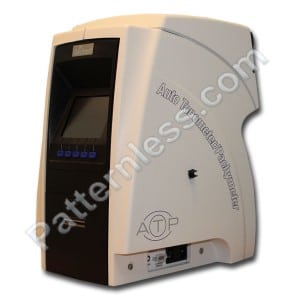 A tonometer is meant for measuring the intraocular pressure or the internal pressure of eye. A test of tonometry checks for glaucoma which is an eye disease potent enough to cause blindness. Glaucoma is known to damage the optic nerve which is at the back of the eye. Damage to this optical nerve can be caused due to a fluid build-up which doesn’t drain out eye properly. A tonometer measures the intraocular pressure or IOP by the process of recording the amount of resistance caused by the cornea to the pressure or indentation. In the methods that have been discussed below the eye surface is numbed with the use of eye drops.
A tonometer is meant for measuring the intraocular pressure or the internal pressure of eye. A test of tonometry checks for glaucoma which is an eye disease potent enough to cause blindness. Glaucoma is known to damage the optic nerve which is at the back of the eye. Damage to this optical nerve can be caused due to a fluid build-up which doesn’t drain out eye properly. A tonometer measures the intraocular pressure or IOP by the process of recording the amount of resistance caused by the cornea to the pressure or indentation. In the methods that have been discussed below the eye surface is numbed with the use of eye drops.
- Applanation or Goldmann tonometer
In this kind of tonometry, a tiny probe is used for flattening a part of the cornea for measuring pressure inside the eye. The process also makes use of a microscope that is called slit lamp for looking into the eye. Pressure in the eye is scaled by the amount of force which is needed for flattening the cornea. This particular method tonometry is regarded as being acute. It is most often used in measuring the IOP when a simple test for screening like that with air puff tonometer detects an increased internal eye pressure.
- Electronic indention tonometer
The use of electronic indention tonometer is much common in the measuring of an increased intraocular pressure. The results shown in the method are accurate. However, the results may also vary from that of the applanation tonometry. The method consists in the placing of the rounded head of an object which resembles a pen on the cornea. A small panel on computer shows the IOP reading.
- Noncontact tonometry or pneumotonometer
The noncontact tonometer is also called air puff tonometer. The name of the process issues from the fact that no contact is established between the device and the eye. A noncontact tonometer makes use of an air puff for flattening the cornea of the eye. The kind of tonometry, however, is generally not regarded as an efficient way for the measurement of intraocular pressure. In most cases, the method finds application in measuring high IOP while being especially good for carrying out the test in children. This kind of tonometer can also be employed for people having undergone LASIK surgery. The method of tonometry, however, does not make use of eyedrops for numbing.
- Indentation or Schiotz tonometer
This kind of tonometer makes use of a plunger for pushing gently on the cornea. The intraocular pressure is scaled by the amount of weight needed for flattening the cornea. The test does not deliver as accurate a result as delivered by the applanation tonometer. The indentation tonometer is therefore not much trusted by the optometrists and ophthalmologists. Other doctors often tend to trust the method. They are doctors for urgent care and family physicians who may be seen using the test commonly.
A tonometer is generally used for examining the eye in checking for increased internal eye pressure that increases the risk of having glaucoma. Tonometry is also used for checking the treatment of glaucoma.
Author Bio: Tony Rollan provides consulting services to VSI (http://www.patternless.com/) and he is an author of many articles on all types of optical and ophthalmic equipment. Author talks about medicine, health, alternative healing, sport and well being..
